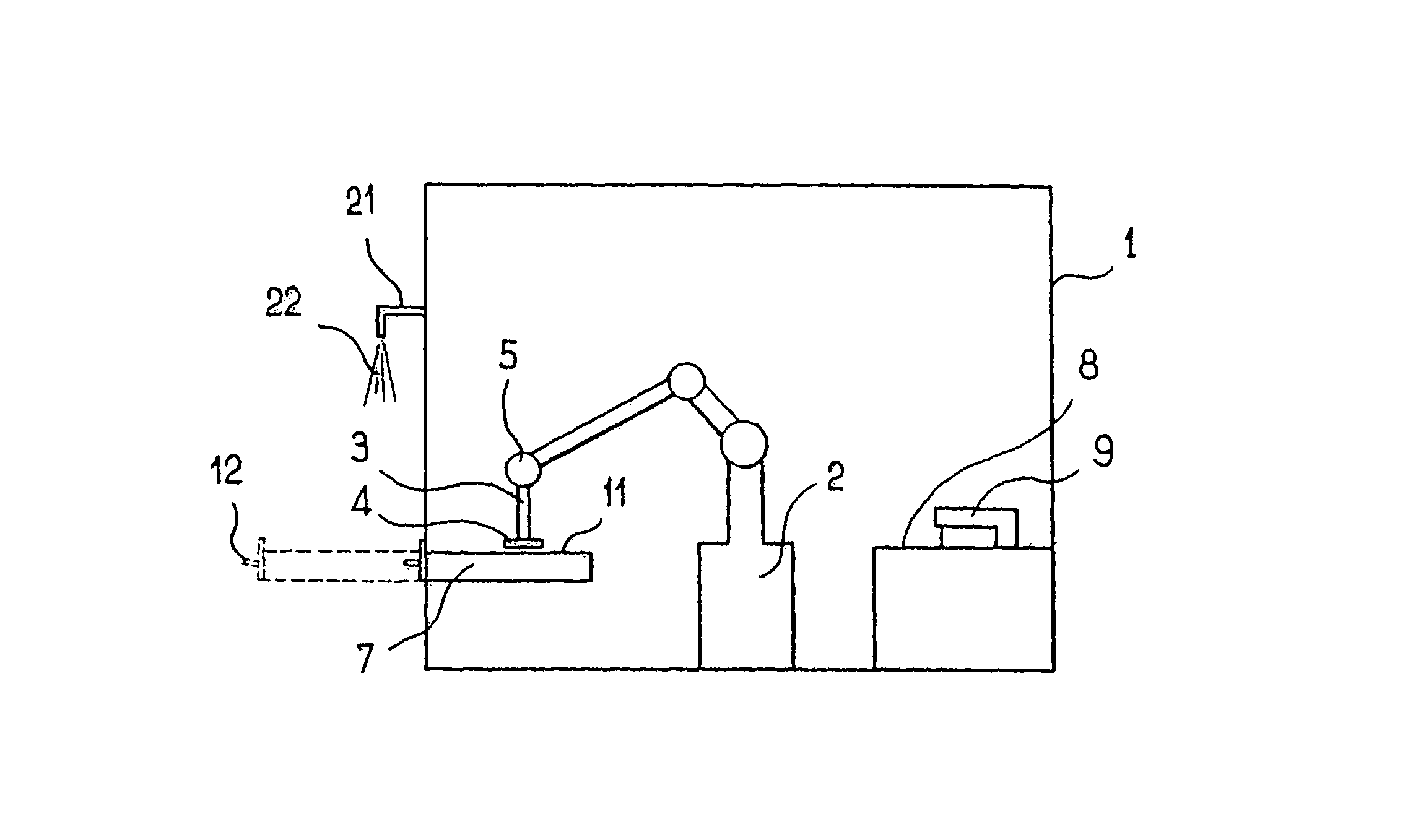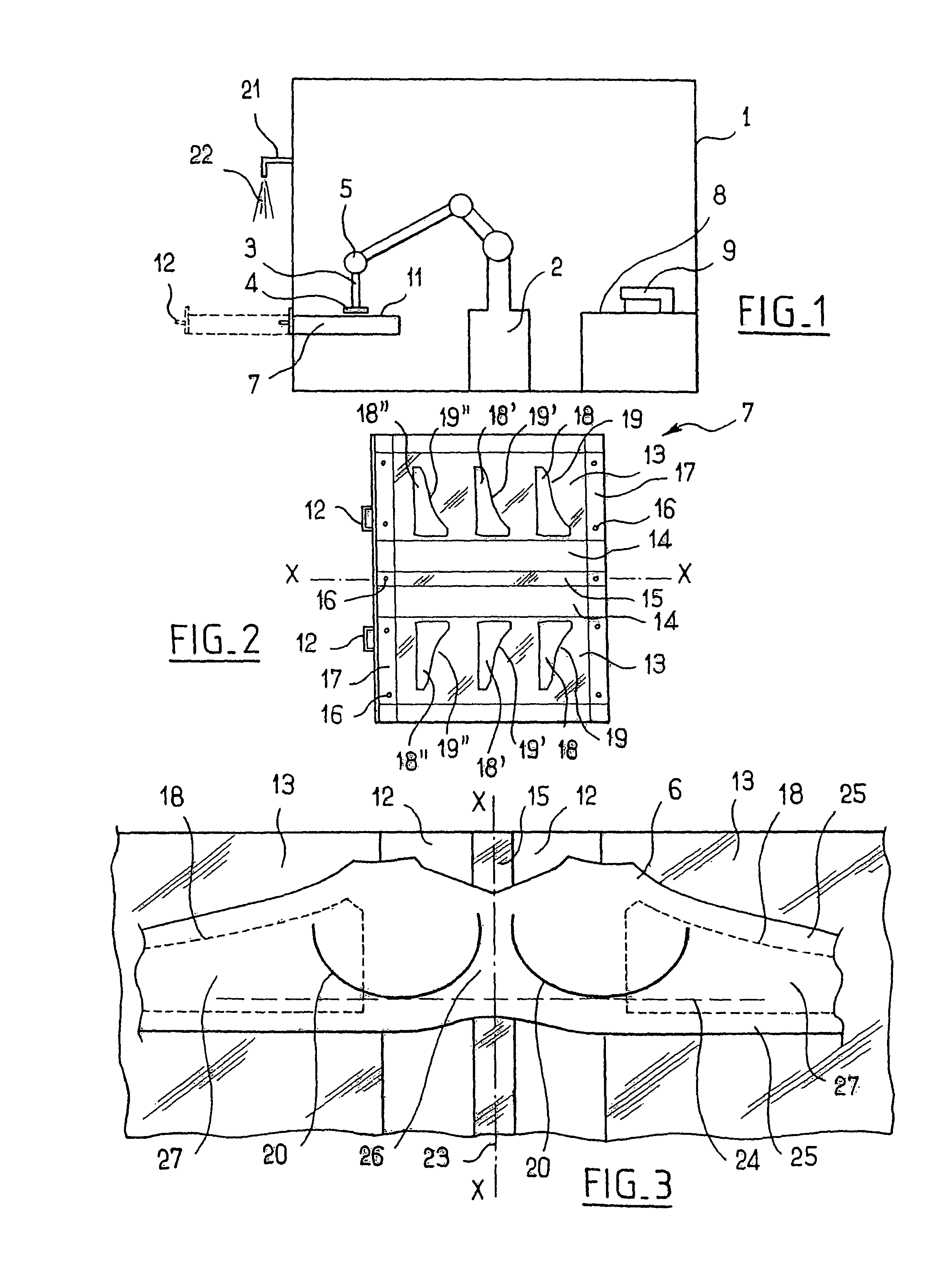Handling method and device for simultaneous processing of textile pieces
a technology for handling and processing textile pieces, applied in the directions of knitting, crocheting, cloth making applications, etc., can solve the problems of inability to accurately pick up and arrange textile pieces, lack of precision in handling, and limited movement and picking up, so as to prevent any suction effect on work surfaces, facilitate processing, and maximise fabric adherence
- Summary
- Abstract
- Description
- Claims
- Application Information
AI Technical Summary
Benefits of technology
Problems solved by technology
Method used
Image
Examples
Embodiment Construction
[0051]FIG. 1 shows a schematic diagram of the device according to the invention comprising, inside a cabin that may be closed 1, a handling robot 2 with 6 programmable axes, and where the end arm 3, articulated on joint 5, carries the pick-up head 4. The head 4 moves to find and pick up a brassiere preform 6 laid out on a pull-out tray 7, carries it to a work bench 8 for processing by processing means 9, and then carries it back to the same pull-out tray 7 after processing. The work benches can be several in number with multiple workstations for successive processing where the head 4 will bring the brassiere preform 6. These are, in particular, cutting-out stations, for example using ultrasound disks able to cut out the perimeter 10 of the preform 6 exactly to the required shape.
[0052]Advantageously, to provide mask loading time, there should be at least two pull-out trays 7, side-by-side, or superposed, so that an operator can load one tray while the other is being unloaded and rel...
PUM
| Property | Measurement | Unit |
|---|---|---|
| shape | aaaaa | aaaaa |
| area | aaaaa | aaaaa |
| suction | aaaaa | aaaaa |
Abstract
Description
Claims
Application Information
 Login to View More
Login to View More - R&D
- Intellectual Property
- Life Sciences
- Materials
- Tech Scout
- Unparalleled Data Quality
- Higher Quality Content
- 60% Fewer Hallucinations
Browse by: Latest US Patents, China's latest patents, Technical Efficacy Thesaurus, Application Domain, Technology Topic, Popular Technical Reports.
© 2025 PatSnap. All rights reserved.Legal|Privacy policy|Modern Slavery Act Transparency Statement|Sitemap|About US| Contact US: help@patsnap.com



